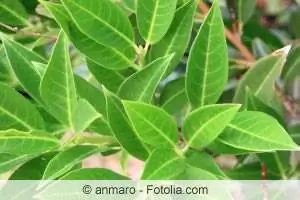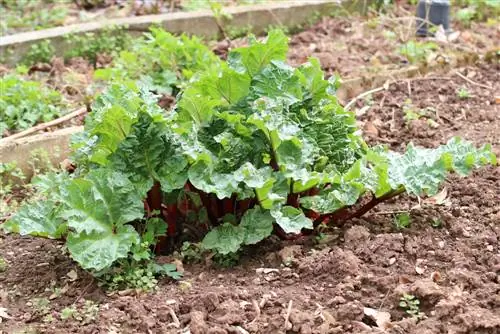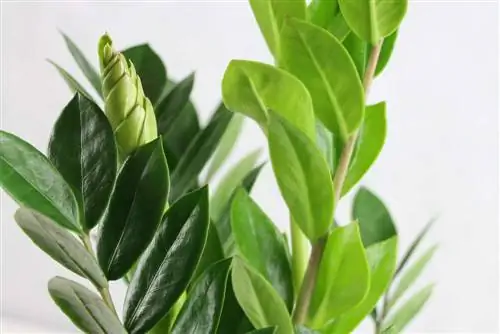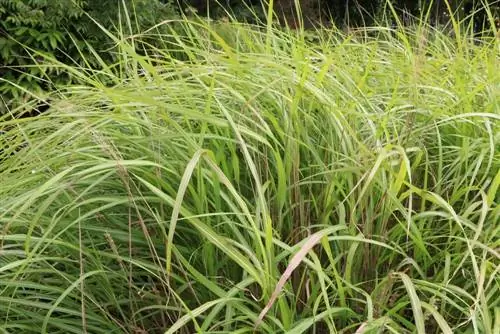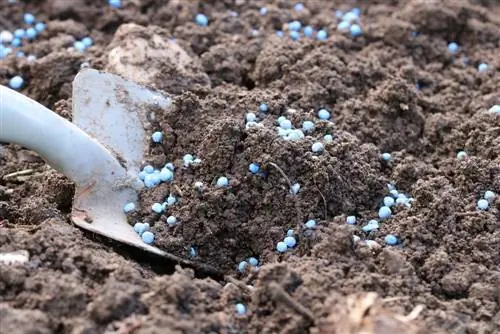- Author admin [email protected].
- Public 2023-12-17 03:39.
- Last modified 2025-01-24 12:45.
If you are redesigning your garden, want to plant trees, for example fruit trees, are putting up a hedge as a privacy screen or simply want to re-edge a flower bed, the question arises as to which plants from the trade are suitable for this. Container plants, root products or balled plants are available in garden centers, well-stocked garden shops and many hardware stores. But which ones are ideal for your own projects, what are the advantages and disadvantages of the different products.
Container Plants
Container plants include all plants that are sold commercially in a pot made of plastic or pressed peat. These have different sizes depending on the size of the plant they contain. The name container is a bit misleading here, as these can also refer to very small pots. Because all plants are offered in the container, from small ground cover to medium-sized trees to small trees. The plants that are sold in the containers have already been grown in them, from the small seedling to the commercially available plant, which has spent its entire life in the pot. The main advantage of this is that the plants have not been removed from the pot and the roots have not been damaged so far. But there are other advantages to choosing a container plant:
- the goods are available in stores all year round
- so planting can take place all year round
- it does not need to be cut back as the roots are still fully formed and have not been removed
- immediately in the first year of planting, the plant concentrates on its growth
- Almost all garden plants are available as container plants
- this includes bedding plants
- Groundcover
- small ornamental trees such as rhododendron or hibiscus
- large coniferous and deciduous trees
- Fruit trees of all kinds
- If planted properly, any container plant will grow without difficulty
- However, the plastic pots must be removed when planting
- Peat pots are placed in the planting hole and decompose by themselves
- However, for large trees, retailers do not use peat pots; these are usually delivered in plastic containers
- The price is not that cheap here, because the plants from the container are often more expensive than others
Tip:
If you use container plants, you can expect a “finished” plant immediately, especially trees purchased in late spring or summer are leafy and may even already bear fruit.
Rootware
The gardener understands root products as plants that are offered to the end buyer in stores without soil and with bare roots. This is why these plants are often referred to as bare root. The biggest advantage of these plants is their low price, but it is not always possible to cultivate these trees or shrubs in your own garden due to their history. When planting the root product, it can happen that it does not grow properly and dies after a short time because some of the roots were damaged during the excavation before sale. Because they have already come a long way before they are offered in stores. The trees and shrubs are grown outdoors and when they have reached a certain size, they are removed from their original location with a spade and the soil around the roots is removed. This usually happens in either spring or fall. Then you have to hurry because the plants have to be put back in the ground as quickly as possible. The following should definitely be taken into account when purchasing root products:
- place in desired location immediately after purchase
- If this is not possible, hammer it into the ground immediately after purchase
- After planting, the tree must be cut back
- because bare-root plants inevitably had their roots removed when they were dug up
- Therefore, after planting, the plant must first be able to concentrate on new root formation
- Bare root plants are usually deciduous or coniferous trees
- However, the deciduous shrubs and trees can only be dug up without leaves
- for this reason the delivery time is also limited to the autumn after the leaves fall and the spring before the new shoots
- only use this product in spring and autumn
- at other times the plants have been removed from the soil for too long and then no longer grow at all
- therefore always stay away from root products offered in summer or winter
Tip:
Rootware is ideal for improving an existing hedge, as the planting holes do not have to be dug out as large, which is an advantage for an existing hedge. Due to their price, it also makes sense to use the inexpensive root product if many of the same plants are needed, for example to create a new hedge.
Ball plants
The ball plants are, as their name suggests, delivered with a root ball that still has soil on it. These trees and hedge plants are also grown outdoors, like the bare-root plants. The difference, however, is that when digging in autumn or spring, the soil remains at the roots. So that it doesn't get lost on the way to the trade, the roots are wrapped with linen and, if necessary, with a wire mesh. The advantage here is that the balled plants are only available in stores in autumn and spring, but then for several weeks. Other facts include the following:
- Ball plants do not have to be used immediately after purchase
- They are cheaper than container plants, but more expensive than root crops
- Linen and wire mesh only needs to be cut open when planting, but not removed
- the linen rots in the earth over time
- Trees and shrubs should be cut back slightly when planting
- These could also have damaged roots that the tree or shrub needs to rebuild
- Most plants grow, the failure rate is rather low
- Ball plants are well suited for all purposes in the garden
- for the creation of a new hedge as well as for repairs
- also for planting solitary trees as a focal point in the garden
- Fruit trees are also often sold as baled plants
Tip:
If you can only plant new trees, shrubs or hedges in spring or autumn, you should use balled plants, as they are more robust than root crops and cheaper than container plants.
Conclusion
There are many advantages and disadvantages to choosing container plants, root crops or balled plants. Container plants in particular are available all year round and not much has to be taken into account when planting them. Because they are grown in a pot, the roots have not been damaged and the small trees or hedges grow quickly and well. The disadvantage of container plants is the price, as they are more expensive than root and ball plants. However, the root products and the balled plants are not available all year round and are only available in stores in autumn or spring. In addition, with the admittedly significantly cheaper bare-root plants, action must be taken immediately after purchase and they must be planted and cut back. The bale plants, on the other hand, are a little more robust because they are delivered with soil, but delivery times are also limited here. However, due to the soil around their roots, these do not have to be used immediately after purchase and can be left for another two weeks. Which product the hobby gardener ultimately chooses can only be determined by the hobby gardener based on the arguments listed here.

